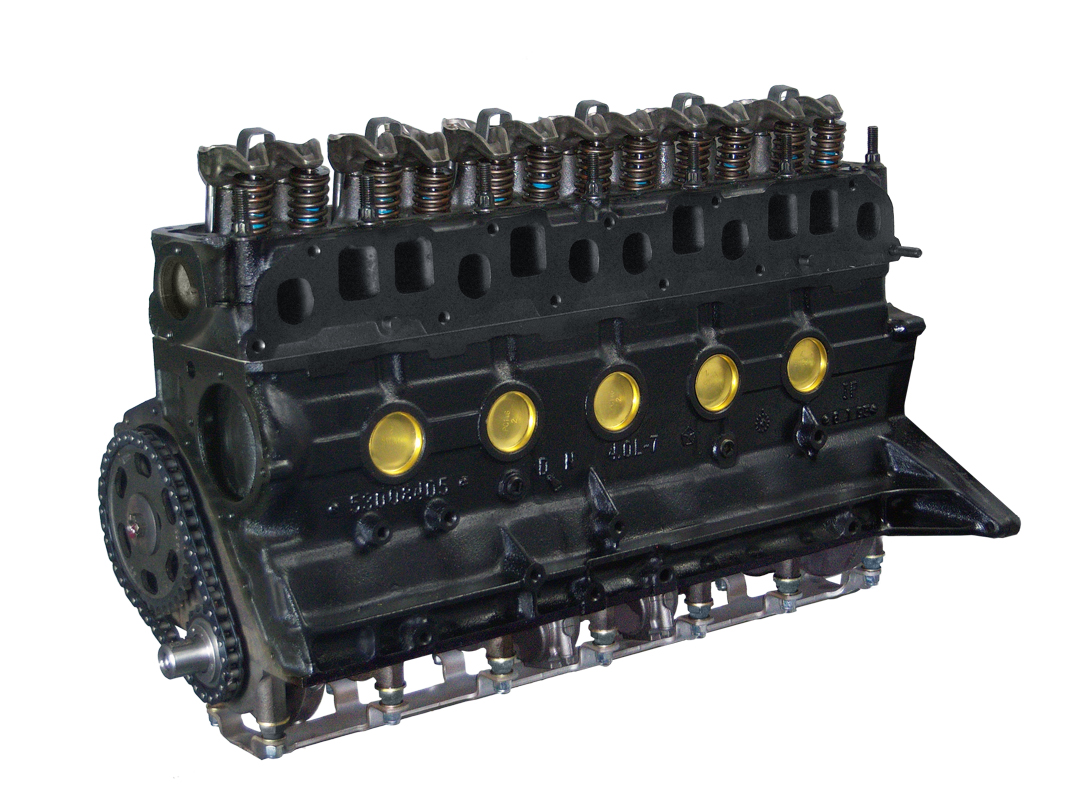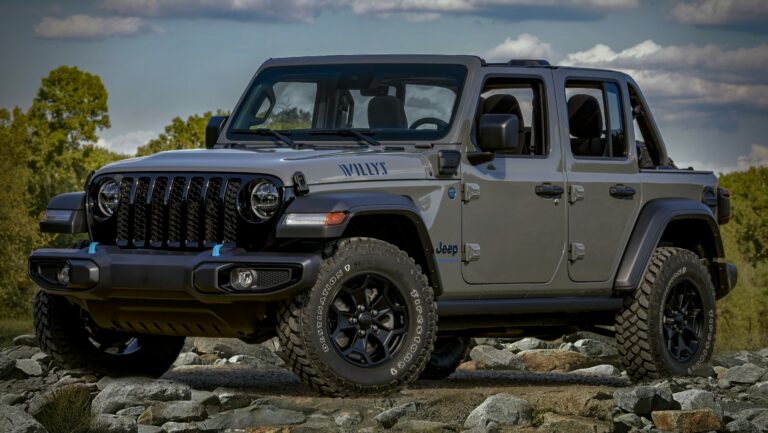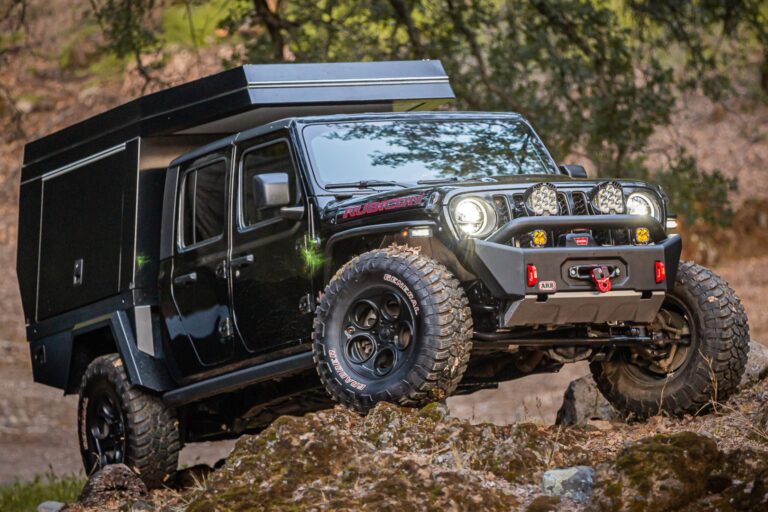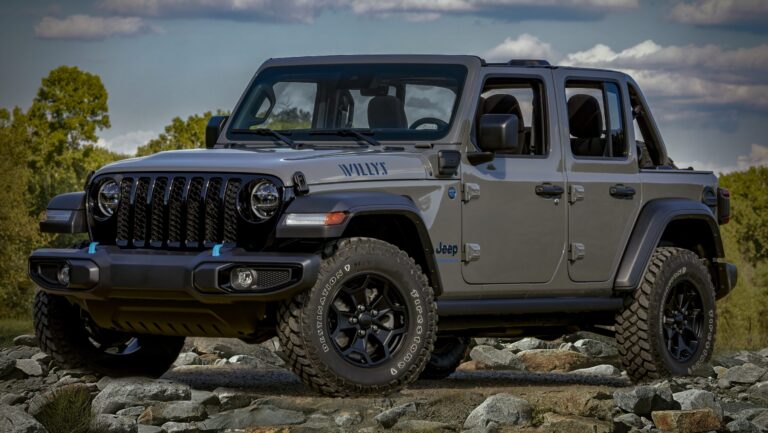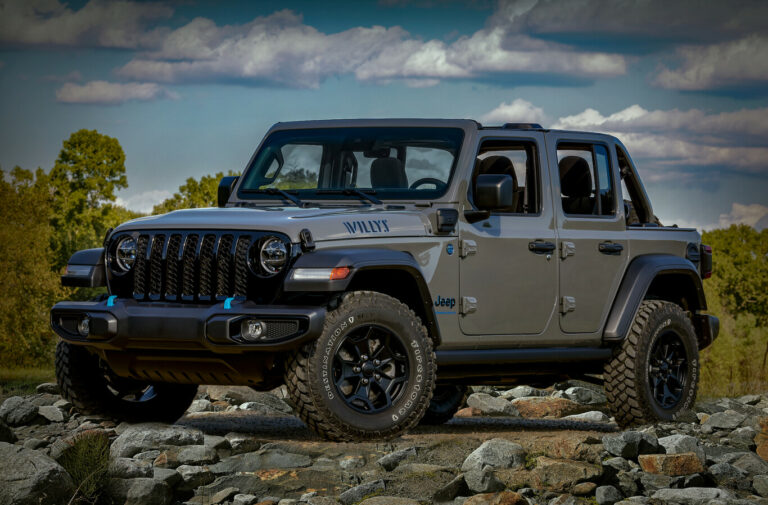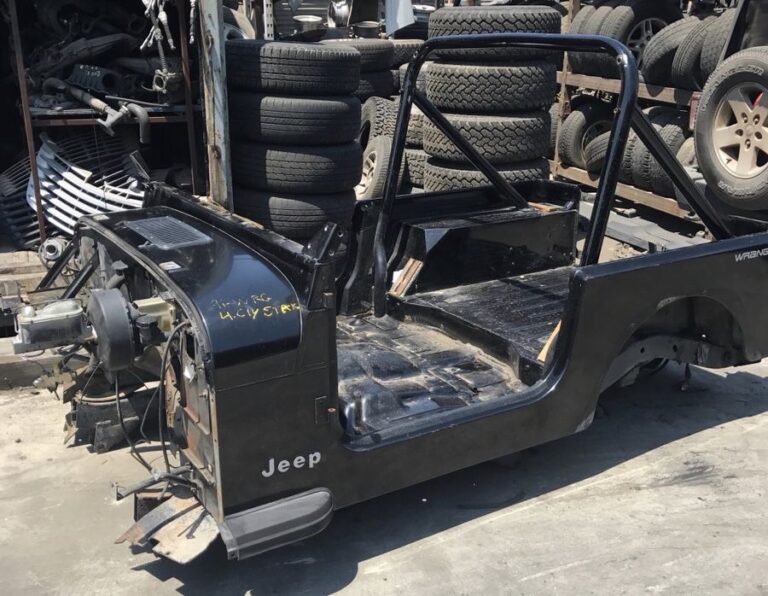Jeep Stroker Motor For Sale: Unleashing the True Potential of Your Off-Road Beast
Jeep Stroker Motor For Sale: Unleashing the True Potential of Your Off-Road Beast jeeps.truckstrend.com
For many Jeep enthusiasts, the iconic inline-six engine, particularly the 4.0L (242 cu in) found in numerous Cherokees (XJ), Wranglers (YJ, TJ), and Grand Cherokees (ZJ), is a testament to rugged reliability. However, while robust, its stock power output often leaves something to be desired, especially when battling challenging trails, hauling heavy loads, or simply trying to keep up with modern traffic. This is where the allure of a Jeep Stroker Motor For Sale enters the picture – a powerful, custom-built engine designed to significantly boost your Jeep’s performance without sacrificing its legendary durability.
A Jeep stroker motor is essentially an enhanced version of the stock inline-six engine, where the displacement is increased by utilizing a crankshaft with a longer "stroke" (the distance the piston travels up and down in the cylinder). This, combined with matching pistons and sometimes a slight bore increase, results in a larger overall engine volume. The outcome? A substantial increase in horsepower and, more critically for off-roaders, a massive surge in low-end torque, transforming your Jeep into a more capable and exhilarating machine. If you’re looking to breathe new life into your beloved Jeep and elevate its capabilities, a stroker motor is an upgrade well worth considering.
Jeep Stroker Motor For Sale: Unleashing the True Potential of Your Off-Road Beast
Understanding the Jeep Stroker Motor: More Than Just a Bigger Engine
At its core, a Jeep stroker motor is a testament to clever engineering and the pursuit of more power from a proven platform. The most common stroker build involves taking the 4.0L inline-six block and mating it with the crankshaft from its older sibling, the 4.2L (258 cu in) AMC engine. The 4.2L crank has a longer stroke than the 4.0L crank, meaning it pushes the pistons further down the cylinders. To accommodate this longer throw and maintain proper piston deck height, custom-length connecting rods and/or custom-designed pistons are used. Often, builders will also bore out the cylinders slightly (e.g., 0.030" or 0.060" overbore) to further increase displacement and allow for fresh cylinder walls.
This combination of a longer stroke and sometimes a larger bore results in a significant increase in engine displacement. For example, a common 4.0L block with a 4.2L crank and a .060 overbore can yield a 4.7L or even a 4.9L engine. More displacement means the engine can ingest more air and fuel per combustion cycle, directly translating to more power and torque. Unlike simply adding bolt-on performance parts, a stroker fundamentally changes the engine’s power characteristics, delivering a deeper well of power, particularly in the lower RPM ranges where it’s most needed for crawling over obstacles or accelerating from a stop.
The Unmatched Benefits of a Stroker Motor for Your Jeep
Investing in a stroker motor for your Jeep offers a multitude of advantages that go beyond mere bragging rights:
- Massive Torque Gains: This is arguably the biggest benefit, especially for off-road enthusiasts. The increased displacement delivers a significant boost in low-end torque, making it easier to climb steep inclines, navigate rocky terrain, and maintain control at low speeds without constantly feathering the clutch or hitting higher RPMs.
- Substantial Horsepower Increase: While torque is king for off-roading, the horsepower gains are undeniable. A properly built stroker can easily add 50-100+ horsepower over a stock 4.0L, improving highway passing power, acceleration, and overall driving dynamics.
- Improved Performance with Larger Tires: When you upgrade to larger tires, the effective gearing of your Jeep changes, often making it feel sluggish. A stroker motor compensates for this by providing the extra power needed to spin those big tires effortlessly, restoring and even exceeding stock performance.
- Better Street Manners: Even if you’re not an extreme off-roader, the added power makes daily driving more enjoyable. Your Jeep will feel more responsive, merge into traffic with greater ease, and generally feel less strained on the highway.
- Enhanced Reliability (When Built Correctly): Despite being a performance modification, a stroker can be as reliable as a stock engine if built by a reputable professional using quality components. In some cases, the use of stronger internal components can even enhance long-term durability.
- Cost-Effective Power: Compared to a full engine swap (e.g., a V8 Hemi or LS conversion), a stroker build is often a more budget-friendly way to achieve significant power gains while retaining the original engine’s architecture and drivetrain compatibility.


Key Considerations When Shopping for a Jeep Stroker Motor For Sale
The market for Jeep stroker motors offers various options, from DIY kits to complete crate engines. Understanding what to look for is crucial for making an informed decision:

- New vs. Rebuilt vs. Used:
- New/Crate Stroker: These are brand-new builds from reputable shops, often coming with a warranty. They are the most expensive but offer peace of mind.
- Rebuilt Stroker: A common option, where a used 4.0L block is completely rebuilt with new stroker components. Quality varies greatly depending on the builder.
- Used Stroker: The cheapest but riskiest option. Requires thorough inspection, compression tests, and ideally, a known history or dyno sheet.
- Displacement Options: Common stroker sizes include 4.5L, 4.6L, 4.7L, and 4.9L. Larger displacements generally offer more power but may require more extensive supporting modifications. The 4.6L and 4.7L are often considered sweet spots for a balance of power, reliability, and cost.
- Component Quality: Inquire about the specific parts used:
- Crankshaft: Is it a remanufactured 4.2L or an aftermarket stroker crank?
- Connecting Rods: Stock 4.0L rods can be used with specific pistons, but aftermarket forged rods offer superior strength.
- Pistons: Are they custom-designed for the stroker application (often forged or hypereutectic)?
- Cylinder Head: Has it been ported and polished? Are the valves upgraded? A good flowing head is critical for maximizing power.
- Camshaft: A custom-ground camshaft specifically designed for the stroker’s displacement and intended use (e.g., low-end torque for off-roading) is essential.
- Other Internals: Bearings, lifters, oil pump, timing chain – ensure they are quality components.
- Fueling and ECU Tuning: A stroker motor demands more fuel. You will almost certainly need larger fuel injectors (e.g., 24lb/hr or 28lb/hr) and potentially an upgraded fuel pump. Crucially, the engine’s computer (ECU) must be custom-tuned to account for the increased displacement and airflow. Without proper tuning, performance will be suboptimal, and engine damage is possible.
- Cooling System Upgrades: More power generates more heat. A high-capacity radiator, upgraded water pump, and a high-flow fan clutch are highly recommended, if not mandatory, to prevent overheating.
- Exhaust System: A free-flowing exhaust manifold (headers) and a larger diameter exhaust system will help the engine breathe better and unleash its full potential.
- Drivetrain Compatibility: Your transmission, transfer case, and axles will be subjected to significantly more torque. Assess if your current drivetrain components can handle the increased power, especially if you plan on aggressive off-roading. Upgrades to U-joints, driveshafts, and potentially axle shafts or even entire axles might be necessary.
- Reputation and Warranty: Purchase from a reputable builder or seller who specializes in Jeep engines. Inquire about warranties, what they cover, and for how long. A detailed build sheet is also invaluable.
Finding Your Ideal Jeep Stroker Motor For Sale
The search for a Jeep stroker motor can lead you down several paths:
- Specialized Engine Builders: This is often the best route for a high-quality, warrantied engine. Companies like ATK Engines, Golen Engine Service, and other smaller, reputable independent shops specialize in building these engines. They offer various stages of completion, from short blocks to complete drop-in units.
- Online Marketplaces & Forums: Websites like Craigslist, eBay, and Facebook Marketplace can have listings for used or rebuilt strokers. Exercise extreme caution here. Always inspect the engine in person, ask for detailed photos and videos, and request a comprehensive build sheet and any service records. Jeep-specific forums and communities (e.g., Cherokee Forum, JeepForum, Wrangler Forum) are also great places to find private sellers and gather recommendations.
- Performance Parts Retailers: Some larger automotive parts retailers or performance shops might offer stroker kits or complete engines as part of their product lineup.
- Local Machine Shops: A trusted local engine machine shop might be able to build a stroker for you using your existing block, which can sometimes be more cost-effective if you source the parts yourself.
When communicating with sellers, be prepared with specific questions about the build, components, and any dyno sheets or performance figures available.
Installation and Post-Installation Tips
Installing a stroker motor is a significant undertaking. While mechanically inclined individuals can attempt a DIY installation, it’s a complex job that benefits greatly from professional expertise.
- Professional Installation: If you’re not an experienced mechanic, consider having a reputable shop perform the installation and initial tuning. They will have the specialized tools and knowledge to ensure everything is installed correctly and efficiently.
- Proper Break-in: Follow the builder’s recommended break-in procedure meticulously. This usually involves specific RPM ranges, oil changes, and avoiding heavy loads for the initial miles to allow components to seat properly.
- Monitor Vital Signs: After installation, pay close attention to your engine’s oil pressure, coolant temperature, and any unusual noises. An aftermarket gauge cluster can provide more accurate readings than stock.
- Regular Maintenance: Adhere to a strict maintenance schedule, including regular oil changes with quality oil, checking fluid levels, and inspecting for leaks.
- Tuning Refinement: The initial tune might be a good starting point, but a professional dyno tune can optimize performance and fuel economy for your specific vehicle and driving conditions.
Common Challenges and Solutions
While a stroker motor offers incredible benefits, be aware of potential challenges:
- Overheating: The increased power output generates more heat.
- Solution: Upgrade your cooling system with a high-capacity aluminum radiator, a high-flow water pump, and a heavy-duty fan clutch or electric fan conversion.
- Fueling Issues: Insufficient fuel delivery or improper air-fuel mixture due to inadequate tuning.
- Solution: Install larger fuel injectors and possibly an upgraded fuel pump. Mandatory custom ECU tuning from a specialist.
- Drivetrain Weaknesses: The stock transmission, transfer case, and axles may struggle with the increased torque.
- Solution: Assess your usage. For aggressive off-roading, plan for upgrades like stronger U-joints, chromoly axle shafts, or even a transmission rebuild/upgrade.
- Cost Overruns: The engine itself is an investment, but supporting modifications can add up.
- Solution: Create a comprehensive budget that includes the engine, cooling, fueling, exhaust, and potential drivetrain upgrades. Factor in installation and tuning costs.
- Emissions Compliance: Custom engine builds and tunes can sometimes affect emissions compliance.
- Solution: Check your local and state emissions regulations before purchasing or building. Some areas are more lenient than others, but it’s a critical consideration.
Jeep Stroker Motor Price Guide (Estimated Ranges)
Prices for Jeep stroker motors can vary significantly based on the builder, components used, displacement, and level of completion (kit vs. complete engine). This table provides estimated ranges for common options:
| Product Type | Description | Estimated Price Range (USD) | Key Inclusions/Notes |
|---|---|---|---|
| DIY Stroker Kit | Components only (crank, rods, pistons, cam, bearings, gaskets) for you to assemble with your own block. | $1,500 – $3,000 | Requires an existing 4.0L block, machine shop work (boring, balancing), and assembly expertise. |
| Stroker Short Block | Assembled lower end (block, crankshaft, rods, pistons, bearings). | $3,000 – $5,500 | You supply your own cylinder head, valvetrain, intake, exhaust, and accessories. Requires professional installation and tuning. |
| Stroker Long Block (Crate) | Assembled engine, including cylinder head, valvetrain, oil pan, timing cover. Ready for accessories. | $5,500 – $8,500 | Most popular option. Does not include intake manifold, throttle body, injectors, or accessories (alternator, power steering, etc.). Requires tuning. Often comes with a limited warranty. |
| Complete Drop-in Stroker | Fully assembled engine, including intake manifold, throttle body, injectors, wiring harness (sometimes), and all necessary accessories. | $8,500 – $12,000+ | Ready to bolt in and connect. May include a pre-flashed ECU. Offers the most convenience but is the most expensive. Ideal for those wanting minimal fuss. Often includes a more comprehensive warranty. |
| Installation & Tuning | Professional installation of a long block/crate engine and custom dyno tuning. | $1,500 – $3,500+ | Varies by shop rates and complexity. Crucial for optimal performance and reliability. This cost is separate from the engine purchase unless explicitly bundled. |
| Supporting Upgrades | Radiator, fuel injectors, exhaust headers, etc. (separate costs) | $1,000 – $3,000+ | Highly recommended/necessary to support the stroker. This is often overlooked in initial budgeting. Costs vary based on quality and brand. |
Note: Prices are estimates and can fluctuate based on market conditions, builder reputation, specific components, and customization level. Always obtain detailed quotes.
Frequently Asked Questions (FAQ) About Jeep Stroker Motors
Q1: How much horsepower and torque can I expect from a stroker?
A1: A well-built 4.6L or 4.7L stroker typically produces 220-270 horsepower and 280-320+ lb-ft of torque, a significant increase over the stock 4.0L’s 190hp/225lb-ft. Larger displacements can yield even more.
Q2: Is a stroker motor reliable?
A2: Yes, if built correctly with quality components and properly tuned. Many strokers are daily driven for tens of thousands of miles without issue. Reliability largely depends on the builder’s expertise and the quality of the supporting modifications.
Q3: Do I need to upgrade my transmission for a stroker?
A3: It depends on your transmission type and intended use. The AW4 automatic and AX15 manual transmissions can often handle the added power for moderate use. However, for aggressive off-roading or sustained heavy loads, an upgraded torque converter for the AW4 or stronger internals/a different transmission for manuals might be necessary.
Q4: Can I pass emissions with a stroker motor?
A4: This varies by state and local regulations. A properly tuned stroker with all emissions equipment intact (catalytic converter, O2 sensors) may pass. However, highly modified engines or those with aggressive camshafts might struggle. Always check your local laws before proceeding.
Q5: What’s the best displacement for a Jeep stroker?
A5: The 4.6L and 4.7L are often considered the "sweet spot," offering excellent power gains without pushing the limits of the 4.0L block too much. Larger displacements like 4.9L or 5.0L are possible but may require more specialized components and attention to cooling.
Q6: How long does a stroker motor last?
A6: With proper break-in, maintenance, and a good tune, a stroker can last as long as or even longer than a stock engine. Lifespans of 100,000+ miles are not uncommon.
Q7: Is it worth the cost to buy a Jeep stroker motor?
A7: For many Jeep owners, absolutely. The significant increase in usable power and torque fundamentally transforms the driving experience, making the Jeep more capable and enjoyable both on and off-road. Compared to a full engine swap, it’s often a more cost-effective way to achieve substantial performance gains.
Conclusion: Reaching Your Jeep’s Full Potential
A Jeep stroker motor is more than just an engine upgrade; it’s a statement. It’s about taking a reliable but sometimes underpowered platform and unlocking its true potential. Whether you’re conquering extreme trails, tackling steep mountain passes, or simply enjoying a more spirited daily commute, the added torque and horsepower from a properly built stroker motor will redefine your Jeep experience.
The journey to finding and installing the perfect Jeep Stroker Motor For Sale requires careful research, a clear understanding of your needs, and a realistic budget. By choosing a reputable builder, investing in quality supporting modifications, and ensuring professional installation and tuning, you’ll be well on your way to enjoying a dramatically more capable and exhilarating Jeep. It’s an investment that pays dividends in performance, capability, and sheer driving pleasure, truly allowing your off-road beast to live up to its legendary reputation.

